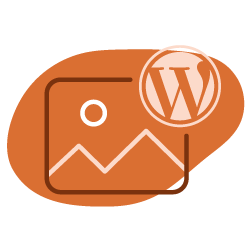A website’s existence on the Internet is justified well when it is able to operate as per the standards of the web, in the right manner, and is seamlessly accessible to the people of the Internet. Factors like the loading speed of the website and the overall user-experience provided by a website are prime determinants of how the audience perceives a website’s success quotient to be.
One such determining factor is the presence of the images on the website. Having high-quality, original, and relevant images on a website is a great way to visually engage the audience with otherwise boring content that they would hesitate to consume. By providing a visual deviation, webmasters not only ensure that they are enhancing the value of their content but also make sure that they are tapping on the SEO juice by driving the image SEO of their content.
Having these images on a website is a prerequisite to audience engagement. However, the presence of these images on a website can also affect the performance of a website. Heavy and high-resolution images can end up consuming a fair part of the server bandwidth and can cause a slowdown for the website. Even if you have made the right choice by filtering through several web hosting options, your web host provider might not deliver to the best of its promises if you fail to take care of your site’s image optimization.
Did you know that if your WordPress website fails to load in less than 3 seconds, the site abandonment rate will be high and you will end up losing your traffic and prospective audience? If not taken care of properly, images can increase the page size and as a result, cause a significant slow down in the website loading time. Eventually, the slow loading time will frustrate your site visitors and affect the page ranking.
So, in this blog post, we will talk about the benefits of Image Optimization and tools that can be used to take care of the same for your WordPress website.
Why Optimize a website’s images?
Optimizing the images on your WordPress website ensures that the loading speed of your website is enhanced and the overall SEO rankings are taken care of. Optimized images on a website can also effectively reduce your hosting costs because there are no heavy images on the website that consume bandwidth the improper way. Optimized images are faster to backup and hence, webmasters can make some savings in the backup storage front.
[Case Study] Driving growth in new markets with on-page SEO
Tools and ways to optimize your WordPress images
To begin with, it is important to find the right balance for your images when it boils down to choosing the best image size that you can go with – an image size that is also not going to affect how images look. Based on the image dimensions, the chosen file format, and the compression used on your images, you will easily be able to determine what works the best for your website’s image optimization strategy.
There are several tools and ways that you can choose when optimizing your images. Tools such as Adobe Photoshop, TinyPNG, GIMP, ImageOptim are some very popular tools that you can use to optimize your site’s images. Here are a few solid image optimization strategies that can help you nail the perfect image SEO score:
- Image lazy-loading: This is a great practice when it comes to optimizing images that are not in the viewport. In order to provide an impeccable page load performance along with the intent of saving substantial bandwidth, lazy loading of images. To implement the lazy loading of images on your site, you can use plugins such as Lazy Load by WP Rocket. It will lazy load all your site’s thumbnails, post images, widget text, avatars, smilies, and iframes.
- Image XML sitemaps: Image XML sitemaps let your website help Google with information about images available on your pages. This way, Google is able to crawl and index your images. When it comes to using image XML sitemaps for image optimization, you can use WordPress plugins like Simple Image XML Sitemap and Udinra All Image Sitemap.
- Using CDN to optimize image performance: Using a CDN to serve up images to your site audience is yet another way of optimizing images for optimum performance. WordPress CDN plugins such as BunnyCDN and CDN Enabler can help you serve images to your distant site visitors quite efficiently and quickly.
- Bulk alt-text modification: Alt text to your images are what cookies are to your tea. The use of the right alt text can ensure that your images are well optimized and perform well for the visitors as well as the search engines. With plugins like Auto Image Attributes, you can automatically add Image attributes and update image attributes for new as well as existing images. The bulk updater updates several images in your Media Library with just one click.
Ideal practices for image optimization
Choosing the right images that are relevant to your site’s content is a very primary step in ensuring that you are also tapping the SEO juice apart from using optimized images on your website. It is also recommended to compress your images before uploading them to your website. It not only saves a lot of work but is also helpful in letting you strip EXIF data, save the correct format, and write a descriptive alt text before you make the upload.
It is also very important to use the right image description i.e. alt text so that the search engines can easily understand the context of your images. Appropriately naming your images before saving the images to your system is also a recommended practice.
Conclusion
It won’t be an exaggeration to say that there are still many websites out there that do not use optimized images. These sites are obviously slow and offer frustrating user-experience to their visitors, killing the overall site’s traffic. So, if you want a faster website that also has a good image SEO score, it is imperative to focus on image optimization.

